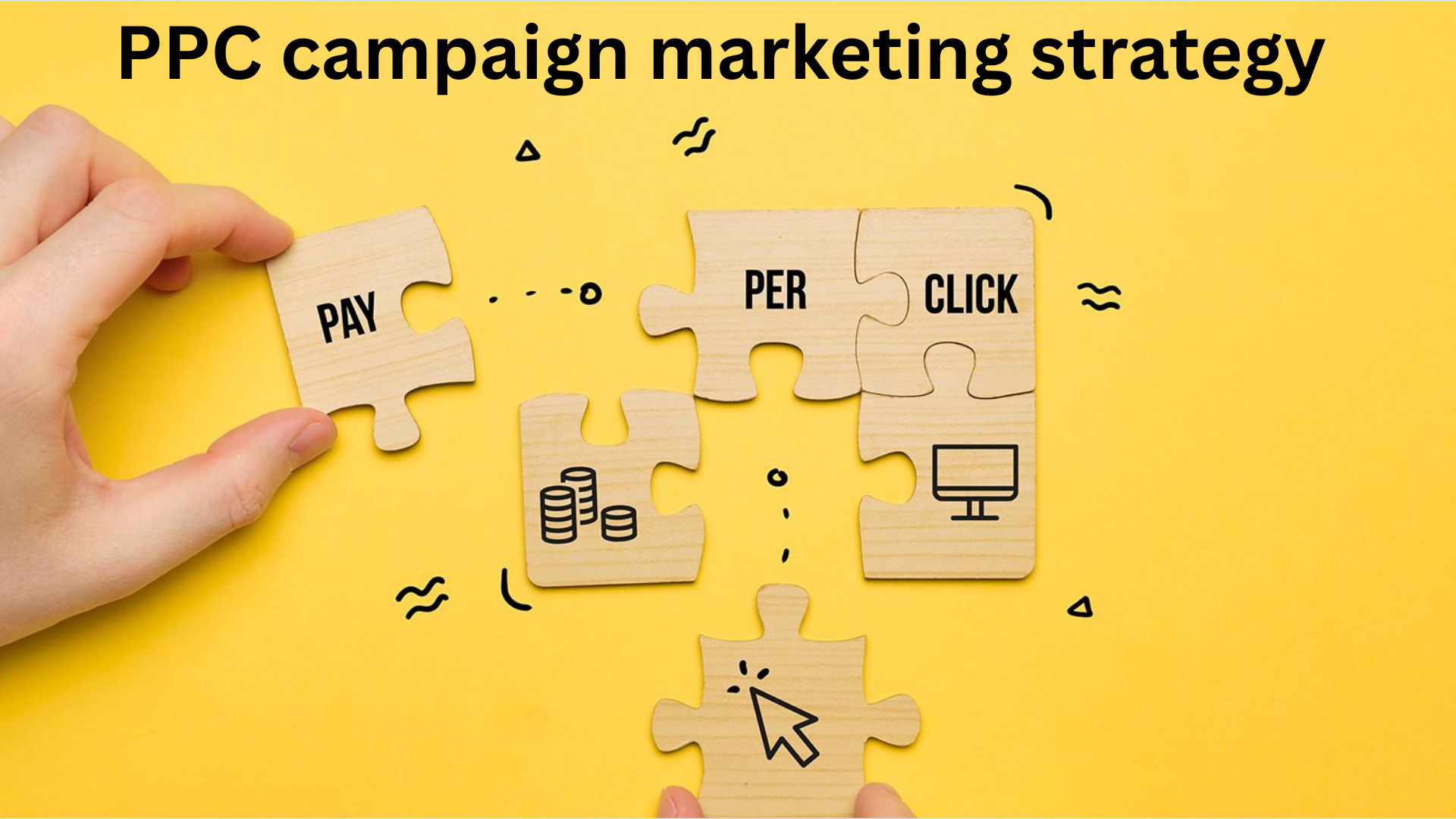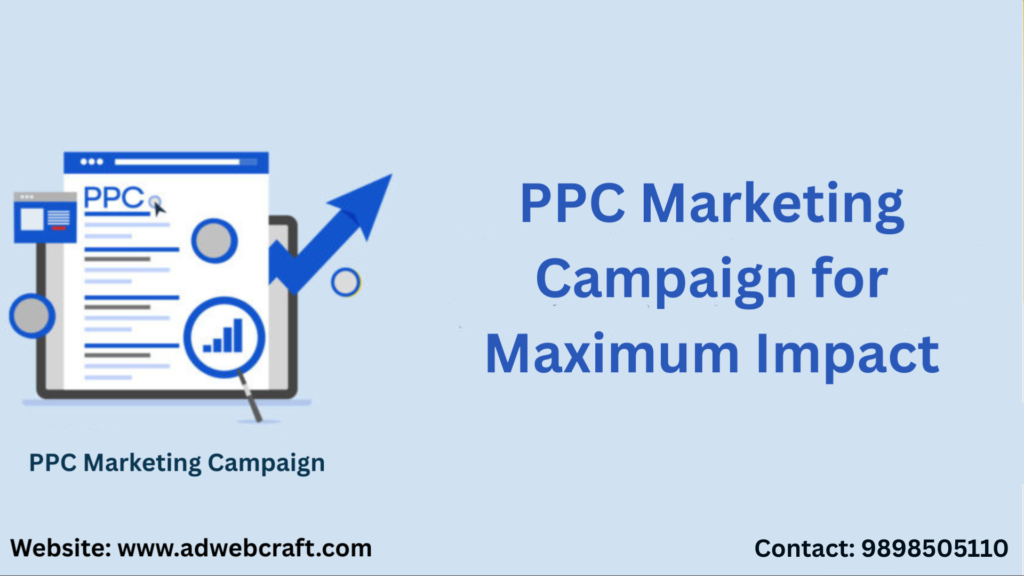In today’s competitive digital landscape, a PPC marketing campaign is one of the most effective ways to drive targeted traffic to your website. Whether you are a small business or an established brand, a well-executed PPC campaign marketing strategy can give you the edge you need to reach potential customers instantly.
However, if you don’t optimize your PPC marketing campaign from the very beginning, you might waste resources and miss out on valuable opportunities. In this blog, we will guide you through eight critical steps to optimize your PPC marketing campaign from scratch, ensuring you get the best results for your investment.
1. Define Your Campaign Goals Clearly
The first step in optimizing your PPC marketing campaign is to define clear and specific goals. What do you want to achieve with your campaign? Do you want to increase sales, generate leads, or boost brand awareness? A digital marketing PPC campaign without clear goals can quickly become ineffective and waste your budget. Setting measurable goals gives you direction and helps you assess the success of your campaign.
For instance, if you’re aiming for increased sales, your key performance indicators (KPIs) might include conversion rates or revenue generated. On the other hand, for lead generation, tracking the number of leads or email sign-ups would be more appropriate. Remember, setting the right goals is crucial to measuring success and optimizing your strategy.
2. Choose the Right Keywords
When running a PPC marketing campaign, selecting the right keywords is crucial. These keywords will determine which searches trigger your ads. The success of your campaign depends on targeting high-converting keywords that match the intent of your potential customers.
You can use tools like Google Keyword Planner to find relevant keywords, but it’s essential to strike a balance. Don’t just go for high-volume keywords; consider long-tail keywords that might have less competition but higher conversion rates. The best PPC campaign marketing strategy includes a mix of broad and specific keywords.
3. Create Targeted Ad Groups
Once you’ve selected your keywords, it’s time to group them into relevant ad groups. Each ad group should focus on a single product or service. By creating targeted ad groups, you ensure that your ads are highly relevant to the users’ search queries, which can improve your Quality Score and lead to lower costs per click.
For example, if you sell skincare products, you could have ad groups for “anti-aging creams,” “acne treatment products,” and “moisturizers.” This ensures that each ad speaks directly to the user’s search intent and improves the chances of conversion.
4. Write Compelling Ad Copy
The next step is to craft compelling ad copy that resonates with your audience. Your ad copy must be clear, concise, and persuasive. Make sure your PPC marketing campaign highlights the unique benefits of your products or services and includes a strong call to action (CTA).
Including the keyword in the ad copy can also improve your Quality Score, which may reduce your cost per click. Try to use action-oriented words like “Buy Now,” “Get Started,” or “Claim Your Offer.” By focusing on benefits rather than just features, you can drive more clicks and conversions.

5. Optimize Landing Pages for Conversions
Your landing page is where your visitors will land after clicking on your ad. It’s essential that your landing pages are optimized to convert these visitors into customers. Ensure that the landing page aligns with the ad’s messaging, making it seamless for the user to take the next step.
To optimize landing pages for conversions, include a clear headline, relevant content, and a strong call-to-action. Make sure your page is mobile-friendly, loads quickly, and is easy to navigate. If users experience delays or confusion, they are likely to leave without converting.
6. Use Negative Keywords
A PPC campaign marketing strategy would not be complete without using negative keywords. These are keywords you want to exclude from your campaigns. By identifying irrelevant keywords, you can avoid wasting your budget on clicks that are unlikely to convert.
For example, if you’re running a campaign for high-end luxury watches, you might want to add “cheap” or “affordable” as negative keywords. This ensures that your ads are not shown to people who are looking for low-cost options, which can help improve the ROI of your campaign.
7. Monitor and Adjust Bids Regularly
Bid management is a critical component of PPC marketing campaign optimization. Setting the right bid for each keyword will determine how much you pay for each click and your ad position on the search results page. By monitoring your bids regularly, you can adjust them to maximize the effectiveness of your campaign.
For instance, if you notice that certain keywords are driving more conversions, you might want to increase the bid for those keywords to ensure your ads are shown more often. On the other hand, if certain keywords are underperforming, lowering the bid or pausing them can help save your budget for better-performing keywords.
8. Analyze Performance and Refine Your Strategy
Finally, the most important part of optimizing your PPC marketing campaign is regular performance analysis. Utilize tools like Google Ads and Google Analytics to track the performance of your ads. Analyze metrics such as click-through rates (CTR), conversion rates, and return on ad spend (ROAS) to determine which aspects of your campaign are working and which need improvement.
Make it a habit to test and refine your strategy by A/B testing different ad copies, keywords, and landing pages. Continuous improvement is key to running a successful PPC campaign.
Frequently Asked Questions
- What is a PPC campaign in marketing?
A. A PPC campaign in marketing refers to an online advertising strategy where businesses pay a fee each time their ad is clicked. It’s a way of buying visits to your site, rather than earning them organically. - How to run a PPC campaign?
A. To run a successful PPC campaign, you need to define your goals, select relevant keywords, create targeted ad groups, write compelling ad copy, optimize landing pages, use negative keywords, monitor bids, and continually analyze performance to make adjustments.
- What are examples of PPC advertising?
A. Examples of PPC advertising include Google Ads, Bing Ads, and social media platforms like Facebook and Instagram, where businesses pay to display their ads to a targeted audience.
- How many types of PPC campaigns are there?
A. There are various types of PPC campaigns, including search ads, display ads, social media ads, and remarketing ads. Each type serves different objectives, such as driving traffic, increasing brand awareness, or encouraging conversions.
Conclusion: Optimize Your PPC Campaign with ADwebcraft
At adwebcraft, we understand that optimizing a PPC marketing campaign is a continuous process that requires strategic planning, constant monitoring, and data-driven adjustments. Our expert team can help you create and execute a PPC campaign marketing strategy that aligns with your business goals and maximizes ROI. With the right approach and regular optimization, your digital marketing PPC campaign can become a powerful tool to drive targeted traffic and achieve your business objectives.



